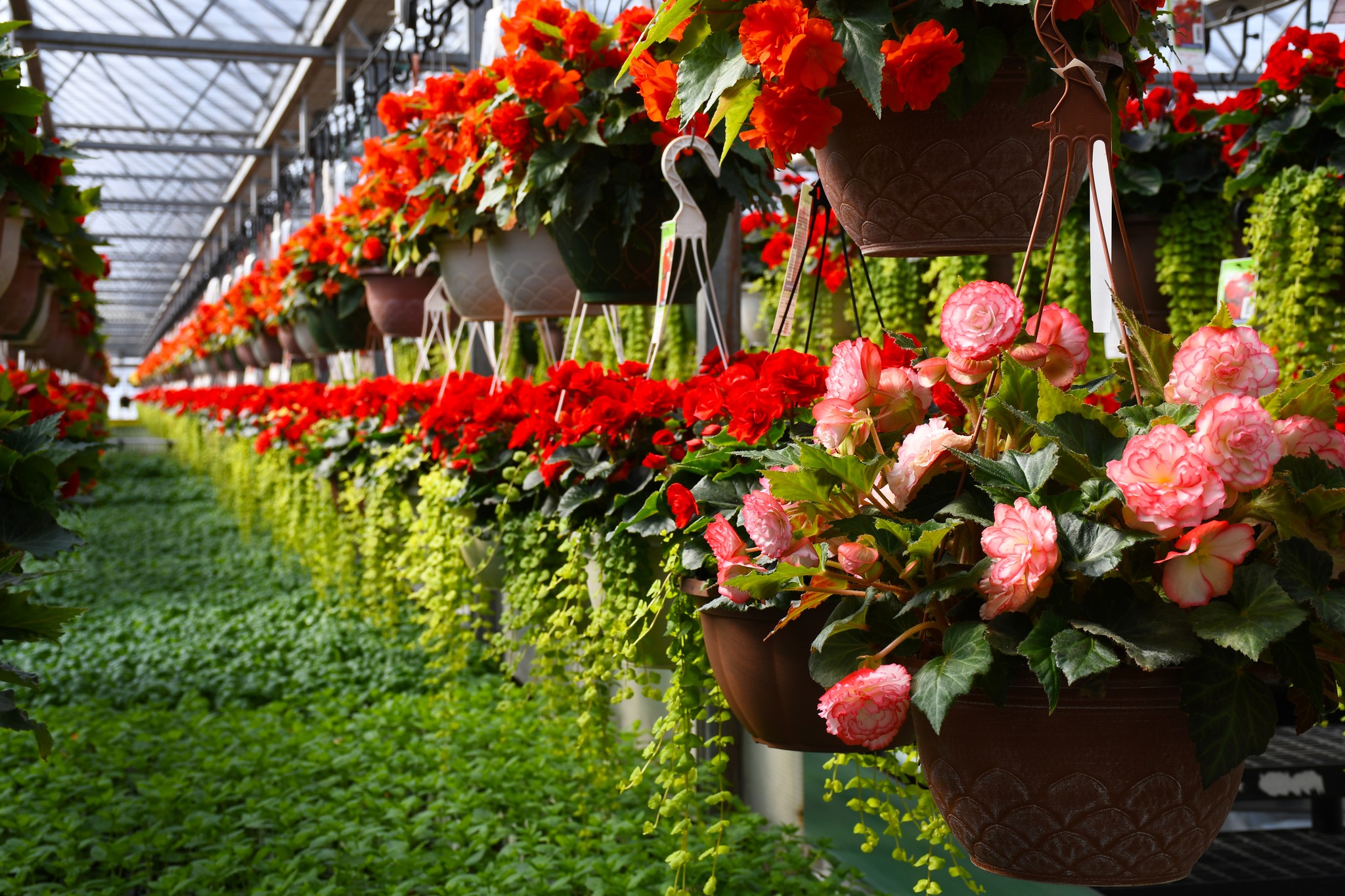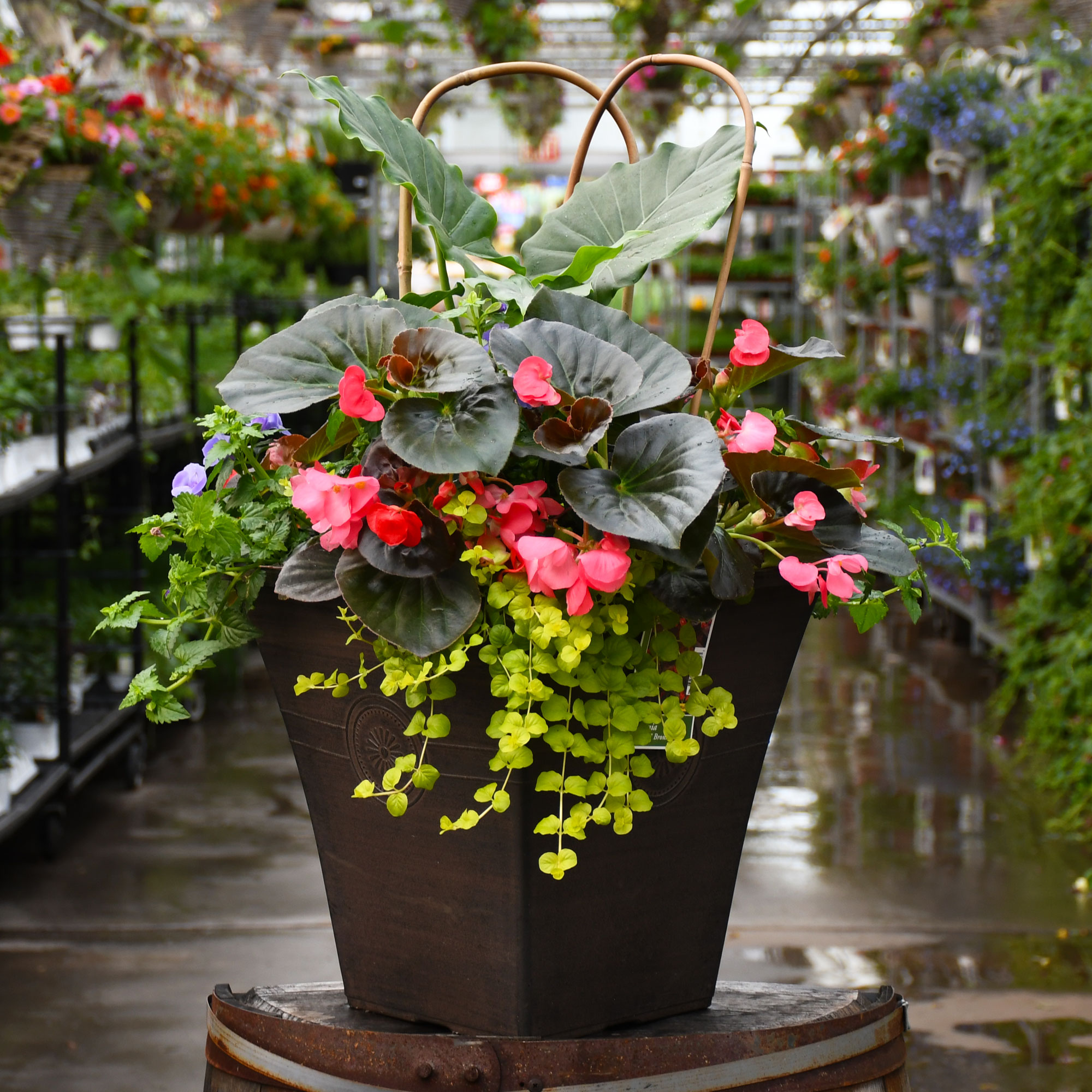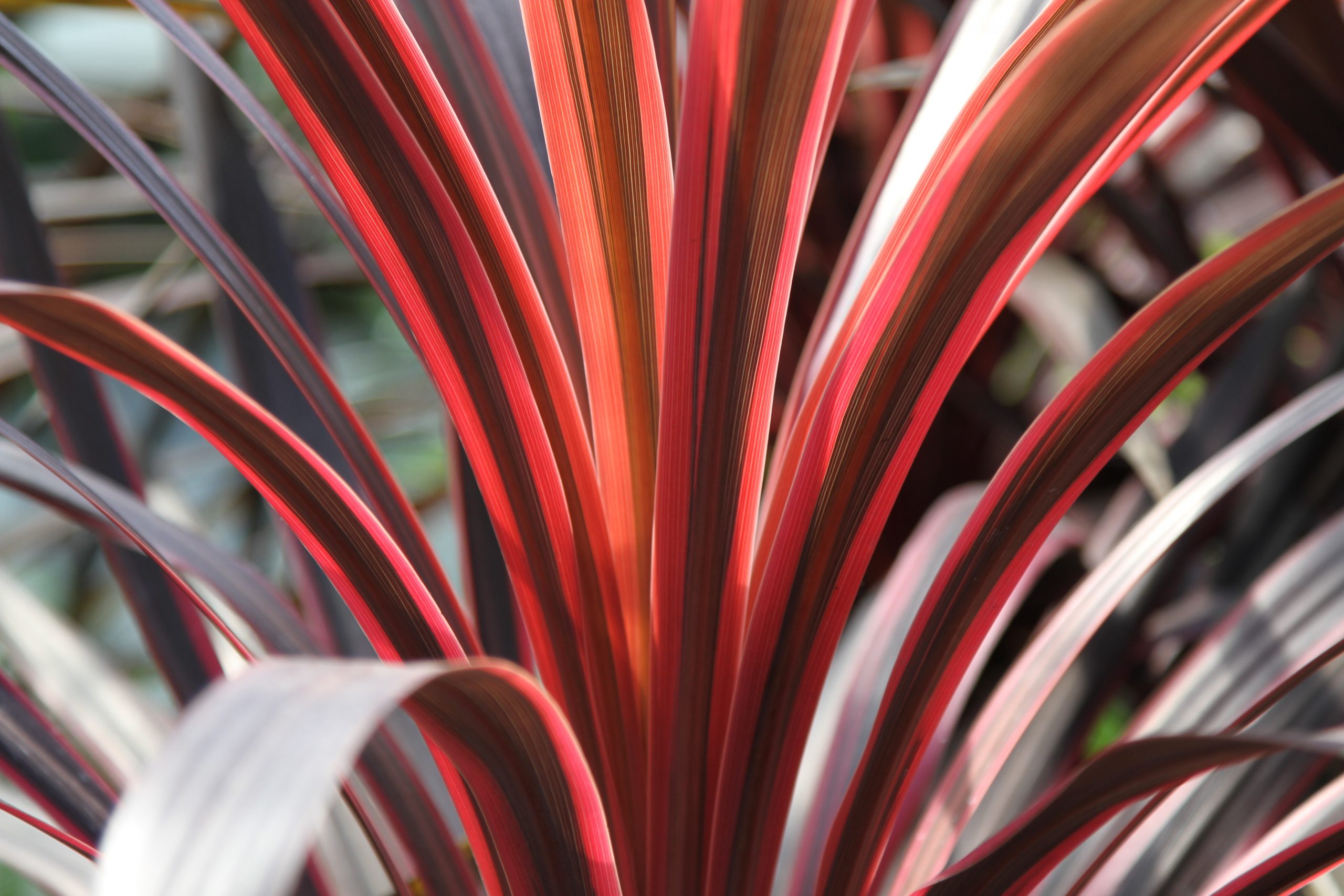This is an interesting palm-like tree that will branch out over time to make several heads. It has big clusters of sweet-smelling white flowers and can be grown in zone 8b with some care. It would look great in a tropical-themed garden.
Cordyline ‘Red Star’ is a stunning tropical plant that can add vibrant color and striking foliage to both outdoor and indoor spaces. With sword-shaped leaves in deep shades of burgundy-red, this plant provides unique texture and eye-catching appeal. Though native to New Zealand, Cordyline ‘Red Star’ can thrive in gardens and containers in warmer climates across the world.
Caring for this dramatic plant is easier than you may think. By understanding Cordyline ‘Red Star’s basic needs and following a few simple care tips, you can keep your plant healthy and happy for years to come. In this complete guide, we will cover everything you need to know about successfully growing Cordyline ‘Red Star’ in your own garden.
An Overview of Cordyline ‘Red Star’
Cordyline ‘Red Star’ is a compact bushy plant in the asparagus family. It is a cultivar of Cordyline australis, also known as cabbage palm or cabbage tree. ‘Red Star’ grows to around 3 to 5 feet tall and 2 to 3 feet wide. Its long, arching leaves emerge in deep burgundy shades and mature to dark red or bronze red.
In summer, ‘Red Star’ produces tall stalks of small white flowers that are sweetly fragrant. It can also produce red berries in late summer or fall. The berries attract birds and make a colorful display.
Overall, Cordyline ‘Red Star’ has a tropical look but is resilient enough for outdoor growing in USDA zones 9 to 11. Its tolerance for heat, drought, and wind makes it a good choice for hot, coastal areas. Inside, it also thrives as a houseplant.
Caring for Cordyline ‘Red Star’: Light Requirements
Cordyline ‘Red Star’ thrives in full sun to partial shade It prefers a minimum of 6 hours of direct sunlight per day. In shadier spots, the plant may stretch toward light sources and the foliage will be less vibrant
Outdoors, situate Cordyline ‘Red Star’ in a sunny garden bed or border. Plant it near walkways, patios, or pools where its colors can be appreciated up close. For containers on the patio or deck, be sure to position pots in the sunniest areas.
If growing as a houseplant, provide as much bright light from south or west-facing windows as possible. Rotate the plant periodically so all sides receive sufficient illumination. Supplement with artificial lighting in darker indoor conditions. The red pigments in the leaves require plenty of light to develop fully.
Providing the Right Soil
Cordyline ‘Red Star’ adapts well to most soil types but prefers a rich, moist, yet well-draining mix. Ideal soils retain moisture but allow excess water to drain away readily.
In the garden, prepare a planting site by amending native soil with organic compost or well-rotted manure. This will improve drainage in heavy clay and increase water retention in loose, sandy soils. Maintain a neutral pH around 6.5 to 7.
Use a quality commercial potting mix for containers. You can also make your own mix by combining equal parts potting soil, perlite or vermiculite, peat moss, and compost. Ensure the container has drainage holes to prevent waterlogging.
Watering Needs
As a tropical plant, Cordyline ‘Red Star’ requires consistently moist soil during the growing season. Water whenever the top few inches become dry. Provide enough water to wet the entire root zone then allow excess to drain away.
In very hot or windy conditions, you may need to water daily. Check soil moisture frequently and don’t allow plants to wilt. Reduce watering frequency in cool weather and winter but don’t let soil dry out completely.
Water potted plants until water drains freely from the container’s base. Discard any accumulated water in saucers to prevent root rot. Move containers to sheltered areas during periods of heavy rain.
Fertilizer for Optimal Growth
Apply a balanced liquid fertilizer every 2 to 4 weeks through the growing season. Look for products in the 20-20-20 or 15-15-15 NPK ratio. Dilute fertilizer to half strength before applying according to label directions.
In mid-spring, you can also feed plants with a slow-release granular fertilizer. Spread this around the root zone and scratch it into the top few inches of soil. This provides a steady supply of nutrients for several months.
Discontinue fertilizer as growth slows in late fall. Resume feeding when new growth appears in spring. Fertilize indoor plants year round but at reduced frequency in winter.
Pruning Advice
Pruning is not required to maintain a neat, compact shape. However, you can trim Cordyline ‘Red Star’ anytime to control size or remove damaged foliage.
Use clean, sharp pruners or garden scissors to cut leaves near the base. Never cut into the central stalk as this can damage the growing point. Remove spent flower stalks back to the stem after blooming finishes.
Moderate pruning will not harm the plant and new leaves will quickly grow to fill gaps. Severe pruning in late spring will sacrifice some of the beautiful summer color display. Limit pruning to light trimming at that time of year.
How to Overwinter Cordyline ‘Red Star’
In zones 9-11, Cordyline ‘Red Star’ can remain in the garden year-round. Elsewhere, it should be overwintered indoors or protected during cold weather.
For garden plants, cut stalks back by half in late fall after the foliage dies back. Carefully dig up the clump of roots and repot into a container just big enough to hold the root ball.
Keep overwintered plants in a sunny window and provide bright light. Water sparingly, allowing the soil to dry out slightly between waterings. Maintain temperatures around 60°F to 65°F.
In spring, move repotted plants back outdoors once all danger of frost has passed. Water generously and provide protection from harsh sun and wind until the plant re-establishes.
Common Problems with Cordyline ‘Red Star’
Cordyline ‘Red Star’ is relatively pest and disease resistant. With proper care, you are unlikely to encounter many issues. But here are a few potential problems to watch for:
-
Leaf spots or blights – Can be caused by fungi and worsened by excess moisture. Improve airflow and avoid wetting foliage when watering.
-
Root rot – Usually caused by overwatering or poor drainage. Allow soil to dry between waterings and ensure pots have drainage.
-
Mealybugs or aphids – Monitor for white cottony deposits or small insects on leaves and stems. Treat with horticultural oil or insecticidal soap sprays.
-
Leaf scorch – Brown leaf tips indicate too much light or insufficient water. Move plant to a shadier spot or increase water.
Catching problems early allows for quick, effective treatment to get your plant healthy again. Maintaining optimal care is the best preventative measure.
Tips for Growing Cordyline ‘Red Star’ in Containers
The compact size and tropical look of Cordyline ‘Red Star’ makes it an exceptional choice for patio pots and indoor plant displays. Follow these tips for great results:
-
Select a container at least 12” wide and deep to allow adequate root space as the plant matures.
-
Ensure containers have drainage holes to prevent waterlogging.
-
Use a quality potting mix and add slow release fertilizer at planting time.
-
Situate containers in full sun on decks, patios, or balconies.
-
Keep soil consistently moist but not saturated.
-
Move pots to sheltered areas in extreme weather or heavy rain.
-
Rotate pots periodically to promote even growth on all sides.
-
Bring containers indoors before temperatures drop below 40°F in fall.
With the right care and conditions, you can successfully grow Cordyline ‘Red Star’ in containers for gorgeous color and tropical flair. The striking red leaves look fantastic combined with bright flowers and foliage.
Achieving the Best Results
Cordyline ‘Red Star’ is easy to grow but does require attention to its basic needs. Follow these tips to achieve the best results:
-
Plant in a sunny, protected spot with well-draining soil.
-
Water thoroughly when soil is partly dry to maintain even moisture.
-
Apply diluted liquid fertilizer every 2-4 weeks during the growing season.
-
Prune lightly to shape or remove damaged leaves if desired.
-
Move to a sheltered location or indoors before temperatures drop below 40°F.
-
Monitor for pests and diseases and treat promptly if found.
-
Avoid overwatering and allow soil to dry slightly between waterings.
-
Rotate container plants periodically to promote even growth.
-
Provide at least 6 hours of direct sun daily for the best color.
With its tolerance for heat, drought, and wind, Cordyline ‘Red Star’ is easier to grow than many tropicals. A little attentive care goes a long way in keeping this eye-catching plant looking its best.
The vibrant red foliage of Cordyline ‘Red Star’ provides striking color and tropical flair to outdoor beds or containers. Its spiky texture contrasts beautifully with flowers, shrubs, and other plants. If you have a bright, sunny spot to fill, this New Zealand native is sure to be a standout specimen.
Direct from the Grower
You can be sure that the annuals you buy are fresh from our greenhouse because they have the Gerten Grown logo on them. We’ve been improving the way we grow things for more than four generations, and we’re proud to offer our customers fresh, local food. Better pricing on better quality plant material, thats Gerten Grown.




Height: 25 feet
Spread: 10 feet
Sunlight: ![]()
![]()
Hardiness Zone: (annual)
Other Names: Cabbage Palm
From late spring to early summer, the Red Star Red Grass Tree has pretty panicles of fragrant white round flowers with chartreuse eyes that grow along its branches. Its attractive sword-like leaves remain burgundy in color throughout the year. The fruit is not ornamentally significant.
Red Star Red Grass Tree is an annual with an upright spreading habit of growth. Its relatively fine texture sets it apart from other garden plants with less refined foliage.
This plant doesn’t need much care, and it looks best when it’s not pruned, but it can handle being pruned. It has no significant negative characteristics.
Red Star Red Grass Tree is recommended for the following landscape applications;
- Accent
- General Garden Use
- Container Planting
The Red Star Red Grass Tree will be about 25 feet tall and 10 feet wide when it’s fully grown. It has a low canopy with a typical clearance of 3 feet from the ground. Even though this plant isn’t really an annual, it will act like one in our climate if you leave it outside over the winter. It will usually need to be replaced the next year. Because of this, gardeners should know that it will not grow the same way it would in its natural environment.
This plant does best in full sun to partial shade. It does best in average to evenly moist conditions, but will not tolerate standing water. It is not particular as to soil type or pH, and is able to handle environmental salt. It is somewhat tolerant of urban pollution. This is a selected variety of a species not originally from North America.
There are many great places to plant the Red Star Red Grass Tree outside. It looks great in the yard and in pots and other outdoor containers. It can be used as an accent plant by itself or in a group with smaller plants around the base and those that spill over the edges because of its large size and upright growth habit. It is even sizeable enough that it can be grown alone in a suitable container. Keep in mind that plants in outdoor baskets and containers may need to be watered more often than plants in the yard or garden.
| Common Family Name | Cordyline |
|---|---|
| Sun Preference | Full-Sun |
Plant Profile – Cordyline Australis ‘Red Star’
FAQ
How do you take care of a red star Cordyline?
Do red cordylines like sun or shade?
Are cordylines best in pots or ground?
Can you cut back Cordyline Red Star?
- The Ultimate Guide to Growing Strawberries in Raised Beds - August 8, 2025
- No-Dig Garden Beds: The Easiest Way to Grow a Beautiful Garden - August 6, 2025
- How to Protect and Preserve Wood for Raised Garden Beds - August 6, 2025

